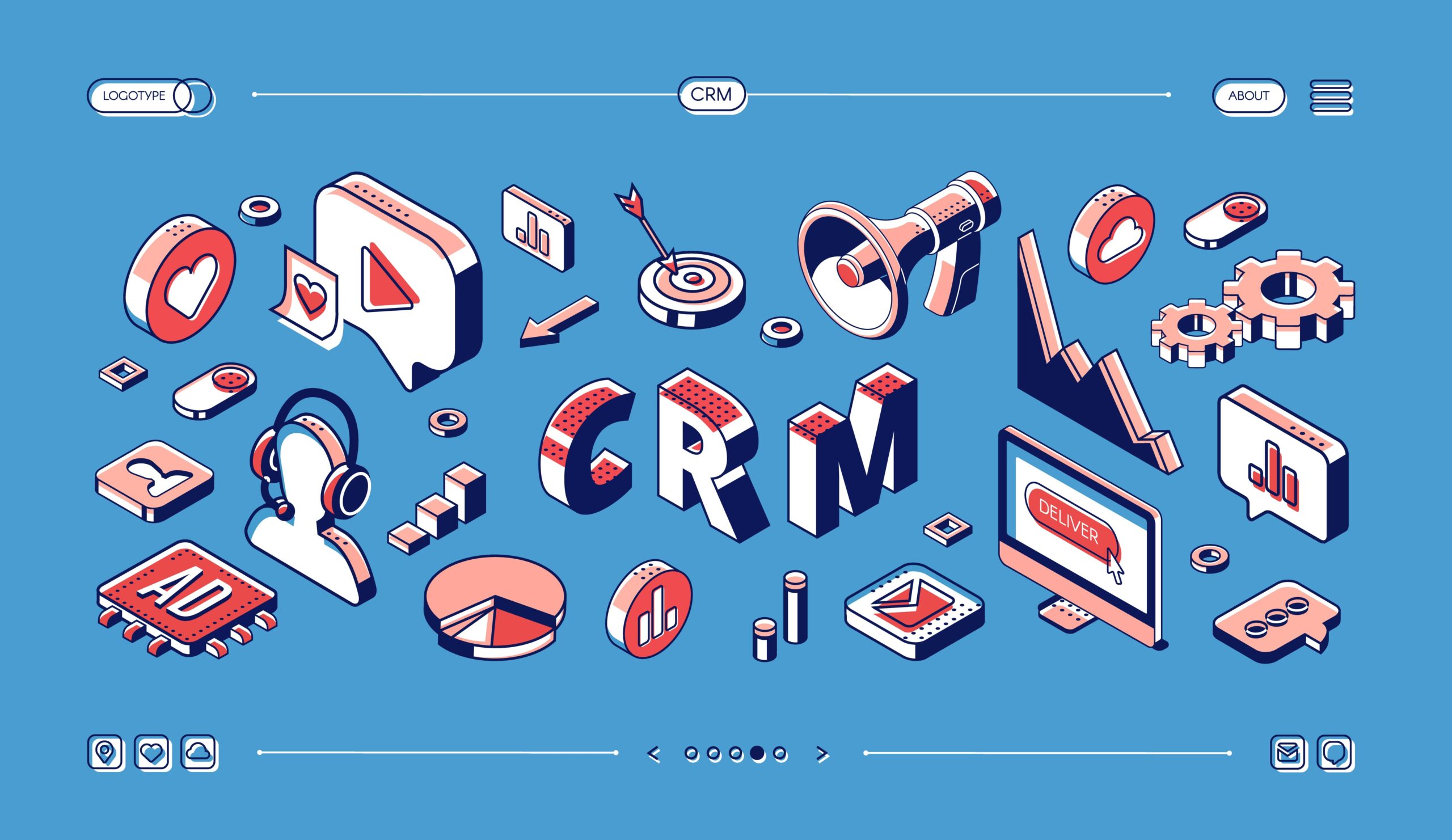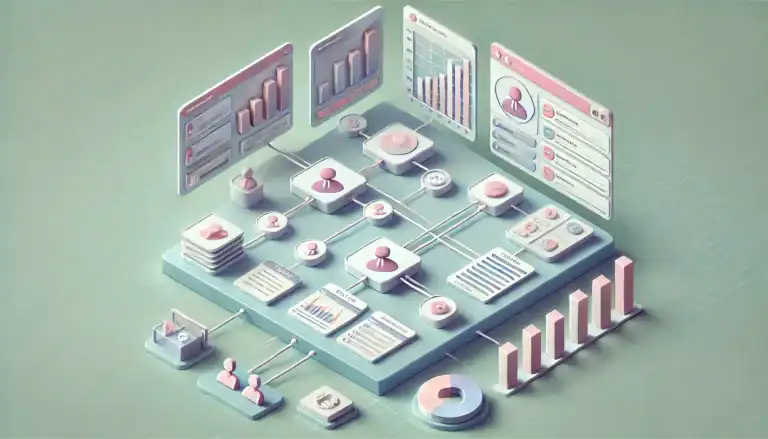Avoid CRM Chaos: 17-Step Guide to Implement the CRM for Small Business Without Disruption
1. Introduction – The Fear Is Real: CRM Changeovers Can Be Painful
Switching CRMs sounds simple—until you’re faced with lost leads, confused team members, and downtime that affects customers. For small businesses that rely heavily on daily operations, the fear of change is real.
But here’s the good news: With a well-planned step-by-step roadmap, CRM implementation doesn’t have to be disruptive. You can continue generating revenue, supporting customers, and managing teams while onboarding a smarter, more scalable CRM.
2. What Happens When CRM Transitions Go Wrong?
Sales Pipeline Freeze
Poorly planned transitions can grind your sales process to a halt. When reps can’t access pipeline data or see next steps, deals get stuck—or lost entirely.
Confused Staff, Missed Follow-Ups
When staff aren’t trained or workflows aren’t mapped, follow-ups slip through the cracks. Customer experience suffers, and so does revenue.
Broken Workflows & Data Loss
Data fields that don’t transfer correctly, integrations that break, or duplicate records can unravel your operations.
Reduced Customer Experience & Churn Risk
If clients don’t receive updates, follow-ups, or timely support, they’ll start to wonder: “Is this company disorganized?” That’s when churn risk spikes.
3. The Best CRM for Small Business Solves These Problems – If Implemented Right
2025 Update – CRM Tools That Prioritize Seamless Onboarding
Newer CRMs like HubSpot, Freshsales, and Zoho CRM offer smoother onboarding flows with setup guides, video walkthroughs, and live support—even on free plans.
Industry Use Cases: Why Real Estate or Manufacturing CRM Makes Setup Easier
- Real Estate CRM: Follow Up Boss integrates with MLS, auto-tags leads from Zillow, and preloads real estate workflows.
- Manufacturing CRM: Creatio and Zoho let you set B2B sales flows, production timelines, and ERP integrations right out of the box.
Features That Minimize Disruption
- Guided setup wizards
- Pre-built sales pipelines
- Sandbox environments for testing
- Templates for emails, reports, and dashboards
4. Pre-Implementation Phase: Planning for Success
This is where you prepare the ground before launching into action.
Step 1: Define Why You’re Switching & What’s Not Working
List the problems with your current system: slow reporting, missed leads, limited automation, etc. These pain points will guide your CRM goals.
Step 2: Build an Implementation Team
Include stakeholders from:
- Sales (for lead flow)
- Ops (for process alignment)
- Support (for customer data handling)
- IT/admin (for integrations & data)
Step 3: Choose the Right CRM – Don’t Just Go by Brand
Focus on industry fit, ease of use, and support—not just marketing hype. Test-drive 2–3 tools with your team before deciding.
Step 4: Map Out Your Key Workflows Before Migration
Use whiteboards or diagrams to outline:
- Lead capture to follow-up
- Deal progression
- Customer onboarding
- Support ticket handling
Step 5: Create a Timeline That Includes Buffer Days
Allow for:
- Data migration
- Training
- Testing
- Feedback loop before full launch
5. CRM Selection Checklist – What to Look for (Industry Specific)
Real Estate Example
- MLS integration
- Mobile lead alerts
- Open house follow-up automation
Top Pick: Follow Up Boss
Manufacturing Example
- Multi-stage B2B pipeline
- Quote generation tools
- ERP syncing
Top Pick: Creatio or Zoho CRM
Field Service Example
- Route mapping
- Work order generation
- Mobile time tracking
Top Pick: Jobber CRM
Must-Have Features
- Email/calendar integration
- Visual pipelines
- Bulk import and de-duplication tools
- Role-based dashboards
6. CRM Implementation Step-by-Step Process (Without Disrupting Business)
Phase 1 – Technical Setup (Foundation Building)
This phase is all about laying the groundwork. Think of it as setting up your office before your team arrives—desks, chairs, internet, and email all need to be ready. Here’s how it breaks down:
1. Choose the Right CRM Plan
Most CRMs offer several pricing tiers. Start by identifying how many users you have, which features are essential (like automation or reporting), and whether you’ll need API access or integrations.
2. Create Admin Roles
Admins should have full access to set up and manage the system. Ideally, appoint someone from operations or tech who understands business processes.
3. Add Users and Set Permissions
Define user roles like sales reps, support agents, or marketing staff. Each should only see or edit the data relevant to their function.
4. Integrate Core Tools
Link your CRM with:
- Email platforms (Gmail, Outlook)
- Calendars (Google, Office365)
- Comms apps (Slack, Zoom)
- Other tools (Stripe, DocuSign)
This helps streamline communication and ensures activities like emails and calls are logged automatically.
Phase 2 – Data Import & Cleanup (Smart Transition)
You wouldn’t move into a new home without packing and labeling your stuff, right? Same here. Don’t just dump your old data—clean and organize it first.
1. Export All Data from Your Current System
Pull all relevant data: contacts, companies, deals, activities, notes, and custom fields.
2. Clean It Up
- Remove outdated contacts (e.g., bounced emails)
- Merge duplicates
- Fix inconsistent formatting
3. Tag and Segment
Label contacts by status, industry, or region. These tags help automate marketing and sales tasks later.
4. Run a Sample Import
Import a small batch first (maybe 100 records). Check that fields map correctly and automations behave as expected.
Phase 3 – Customization & Workflow Setup (Personalize Your CRM)
This is where you adapt the CRM to fit your business—not the other way around.
1. Define Your Sales Pipeline
Every business has a unique sales journey. Create pipeline stages that reflect yours, like:
- New Lead → Discovery Call → Proposal Sent → Negotiation → Closed-Won
2. Set Up Task and Activity Flows
Assign follow-ups and to-dos to each pipeline stage. E.g., send a quote automatically after a demo call.
3. Build Email Templates & Automation
Templates save time and keep communication consistent. Automate:
- Welcome emails
- Demo reminders
- Follow-ups
4. Create Custom Fields & Reports
Track what matters most: lead source, budget, buying stage. Use these fields to build custom dashboards later.
Industry Tips:
- Real Estate CRM: Add pipeline stages like “Open House Attended” and auto-trigger an agent follow-up call.
- Manufacturing CRM: Create automation to alert sales when stock is ready or send order updates to customers.
Phase 4 – Team Training & Soft Launch (Low-Risk Rollout)
Your CRM is only as good as the people using it. This phase ensures everyone knows how to use the system confidently.
1. Conduct Role-Based Training
Don’t overwhelm the team with the full CRM. Train based on roles:
- Sales reps: Deals, follow-ups, pipeline
- Support staff: Tickets, notes, customer records
- Managers: Reports, forecasting, permissions
2. Share Documentation
Prepare:
- Quick-start guides
- Screen recordings or walkthrough videos
- FAQs tailored to your workflows
3. Soft Launch in Parallel Mode
Let the team use both the old system and the new CRM for one week. This gives them a chance to:
- Get comfortable
- Spot missing features
- Identify errors before a full switch
4. Collect Feedback & Adjust
Use surveys or direct feedback to tweak the setup. Maybe a pipeline stage needs rewording, or a dashboard is missing key data.
Phase 5 – Full Launch & Ongoing Support (Go Live with Confidence)
Now it’s showtime—but you’ll keep your safety net for a little longer.
1. Shut Down the Old System (When Ready)
Only turn off the old CRM when:
- The new system has been fully tested
- The team is comfortable
- You’ve backed up everything
2. Monitor Key Metrics
In the first 2–3 weeks post-launch, monitor:
- Are leads progressing through the funnel?
- Are automations firing?
- Is follow-up timely?
3. Assign a CRM Champion
Appoint an internal go-to person for questions. This champion helps onboard new hires and coordinates with the CRM vendor if needed.
4. Continuous Improvement
Host a 30-day review session. Ask:
- What’s working well?
- What’s still clunky?
- What should we automate next?
These detailed phases ensure your CRM implementation stays smooth, user-friendly, and—most importantly—non-disruptive to your business. Whether you’re a service provider, real estate broker, or manufacturer, this phased strategy will keep your business humming while setting the foundation for future growth.
7. Risk Management – How to Minimize Downtime, Confusion & Data Loss
- Always run a parallel CRM test before shutting down the old one.
- Back up all CSV exports and customer notes.
- Avoid CRM launches before holidays, busy sales seasons, or product launches.
- Create a fallback plan in case you need to pause the rollout.
8. CRM Support & Onboarding Comparison Table
Here’s how leading CRMs support new users:
| CRM Name | Onboarding Support | Migration Tools | Training Resources | Industries Supported | Ease of Use |
| HubSpot CRM | Free guides & calls | CSV, Zapier, integrations | Academy, email templates | Freelancers, Startups | ⭐⭐⭐⭐⭐ |
| Zoho CRM | Paid onboarding option | Import tools, APIs | Help docs, videos | Manufacturing, Services | ⭐⭐⭐⭐☆ |
| Freshsales | Setup coaching | CSV, auto-field matching | Blog, videos | SaaS, Small Businesses | ⭐⭐⭐⭐☆ |
| Follow Up Boss | Concierge onboarding | MLS sync, CSV imports | Templates, email support | Real Estate Teams | ⭐⭐⭐⭐⭐ |
| Salesforce Essentials | Trailhead training | In-app wizard | Courses, forums | Enterprises, Nonprofits | ⭐⭐⭐⭐ |
9. Real Business Scenarios: Switching Without Breaking the System
Real Estate Team
Before: Using Excel and texting clients manually
After: Follow Up Boss auto-imported Zillow leads, reduced response times, and automated follow-up emails
Manufacturing Company
Before: Zoho was too limited for multi-stage quoting
After: Switched to Creatio; built custom workflows for order approval and lead scoring
Freelancer Agency
Before: Scattered client info in Notion and Gmail
After: HubSpot CRM organized everything and cut manual entry by 70%
10. FAQs – CRM Implementation Without Chaos
- How long does implementation take?
2–4 weeks on average for small teams - Can I import from Excel?
Yes, nearly all CRMs allow easy CSV import - What if my team resists change?
Start with a soft launch and train them early - Do CRMs support mobile use?
Most modern CRMs have full-featured mobile apps - What’s the safest way to test before launch?
Use sandbox environments or create a test team - Are free CRMs worth it?
Yes—HubSpot offers excellent value even on its free plan - Can I integrate CRMs with email marketing?
Yes, most integrate with Mailchimp, ActiveCampaign, etc. - Is my data safe during migration?
Use secure export methods and always back up - Which CRM has the shortest learning curve?
HubSpot and Freshsales are beginner-friendly - What’s a CRM champion?
An internal “power user” who leads the team and supports others post-launch
11. Final Thoughts – You Can Implement the CRM Without Breaking Your Business
Switching to a CRM is a big move—but it doesn’t have to be a scary one. With the right preparation, team involvement, and choice of tool, your business can streamline processes, automate tasks, and offer a better customer experience.
Choose the best CRM for small business based on your industry, ease of use, and available support. And remember—the smoother your implementation, the faster your team adapts and grows.



